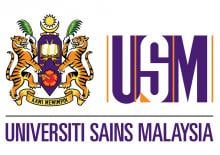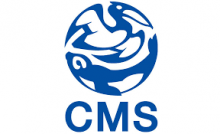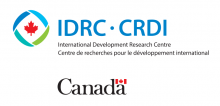Science
News

30 Apr 2006
Studies in recent years have shown that some brain regions continue to generate new neurons even during adulthood. Scientists have identified a new target for an old drug that has been used to treat tuberculosis for over 50 years.

30 Apr 2006
International Journal of Pure and Applied Physics (IJPAP) is a peer reviewed international journal of high quality devoted to the publication of original research papers from pure and applied Physics and their broad range of applications.

27 Apr 2006
The intent is to foster South–South cooperation on sharing experts, facilities, training scientists, and promoting the best practices among centres of excellence in sustainable dryland development across the vast CWANA (Central and West Asia and North Africa) region plus neighbouring dry areas in Western China, South Asia, and sub-Saharan Africa

27 Apr 2006
In the arid and semi-arid regions, particularly on the degraded lands and lands affected by moving sands, Jatropha curcas L. has proved to be a promising oil-bearing tree. The seeds of this Euphorbiaceae tree contain more than 30 % oil, which can be used for making bio-diesel.

27 Apr 2006
The use of climatic data could help in providing tools for proper pest management through the possibility of forecasting the incidence of pests and diseases, and hence reduce the risk in plant production and help to minimize the amounts of chemicals used to control pests.

26 Apr 2006
The last century has seen a dramatic increase in snowfall in central Asia compared to the previous thousand years, according to research published in this week's Nature.

26 Apr 2006
Rapid treatment and isolation of not just infected cases but also their household contacts will be the key elements of an effective strategy to beat a future influenza pandemic, report researchers who have simulated the spread of such an outbreak in both Great Britain and the United States.

26 Apr 2006
Summaries of newsworthy papers from Nature. VOL.440 NO.7088 DATED 27 April 2006 including :LOX stops the spread and ‘Top dog’ determined in the womb

26 Apr 2006
The process of Astaxanthin extraction is not only expensive but environementally unfriendly as well. This new research offers an environmentally friendly and cheap alternative

24 Apr 2006
Aeolian desertification is land degradation characterized by wind erosion mainly resulting from the excessive human activities in arid, semiarid and part of sub-humid regions in North China. The research on aeolian desertification has been underway for more than 5 decades leading to the establishment and development of China’s desert science.

24 Apr 2006
Since 1993 FEDA has worked in Rosetta (coastal area), Wadi Natroun (desert area) and Gamalia district (historic part of Cairo). These fragile ecosystems are well known for their cultural heritage. Both Gamalia and Rosetta have some of the most important Islamic monuments, while Wadi Natroun is known for its famous Coptic Christian monasteries.

24 Apr 2006
Nearly 50% of the arid regions globally, including one-quarter of the irrigated land, one-half of the rainfed cropland and three-quarters of the rangeland, are estimated to be degraded. Unless this trend is checked, the food security of the people in the dry areas will continue to be under threat.

23 Apr 2006
NATURE AND THE NATURE RESEARCH JOURNALS PRESS RELEASE - For papers that will be published online on 23 April 2006

21 Apr 2006
The goal of the meeting was to address migratory bird populations and environmental aspects in the current Asian lineage Highly Pathogenic Avian Influenza (HPAI) virus subtype H5N1 epidemic. Sound scientific information, including an understanding of the environment and migratory bird populations, is a necessity for understanding the epidemic

20 Apr 2006
Soil & water conservation & degradation; Dust-storm process; Range management; Forage & livestock production; Biodiversity & Ethnobotany; Stress physiology; Renewable energy; Indigenous/traditional knowledge & heritage; Sustainable development of oasis; desert communities & socioeconomic studies; & role of NGO’s; Application of new...

20 Apr 2006
Researchers have shown that by labeling pools of cells with different combinations of dyes, they can generate fluorescent ‘barcodes’….; A technique which helps cell culture make the leap into the third dimension, allowing scientists to more closely replicate naturally occurring arrangements of cells in the laboratory is described

19 Apr 2006
Human societies are notable for cooperation, but the origins of this behaviour are confusing. As the 20-year anniversary of Chernobyl approaches, Nature investigates the health effects of radioactive fallout. The process of protein degradation and clearance of cellular components may be more important than was previously understood

19 Apr 2006
Summaries of newsworthy stories from Nature Vol 440, No 7087 Dated 20 April 2006 including Evolutionary pathways lead to same destination and Invisible skeleton
19 Apr 2006
Researchers from the International Islamic University won 8 medals at the recent 34th Geneva International Invention Exposition including 2 Golds and 6 Silvers.

18 Apr 2006
ICARDA seeks a Range Ecology and Management Specialist

17 Apr 2006
The Center follows the university’s overall research policy as authorized by the Organization for Research Advancement and Administration (ORAA). It also acts as a primary point of contact for any inquires concerning future industry-government-academia collaboration with Keio University.

16 Apr 2006
Typhoid is a major public health problem caused by the bacteria Salmonella typhi and transmitted via food. The current method for diagnosis of typhoid carriers takes 2-7 days, has low isolation rate and labour intensive. This EZTYPHI Carrier DNA kit will be able to do this in a single tube within 3 hours and is cost effective.

13 Apr 2006
IDRC would like to appoint a local writer who is based in Jakarta to participate in the project described below.

13 Apr 2006
Nature Publishing Group (NPG) and the Shanghai Institutes for Biological Sciences (SIBS) today announce the appointment of Dr Dangsheng Li as the new Deputy-Editor-in-Chief for China’s premier life science journal, Cell Research (CR).

13 Apr 2006
Canada’s International Development Research Centre (IDRC) is pleased to announce its support of the Asia Research Partnership on Pandemic Influenza. Pandemic experts, scientists and Asian national granting councils will meet in Beijing, China, on April 24-26 to formalize the Partnership.

12 Apr 2006
Summaries of newsworthy papers from Nature. Vol.440 No.7086 Dated 13 April 2006 including Watching synpases at work; The ‘impossible’ microbes; Doting mums let their kids eat them; The gas that won't settle down; A new spin on Vega; Catfish hunts on land

12 Apr 2006
A new idea about why the experimental antibody drug TGN1412 had devastating effects on humans that had not been seen in animal tests is put forward in an exclusive special news report by Nature this week.

12 Apr 2006
All the eight products exhibited by UNIMAS at the 34th Geneva International Invention Exposition 5 – 9 April 2006, received awards. Apart from winning 4 Gold, 3 Silver and 1 Bronze medals, UNIMAS was the only Malaysian university participant accredited with Special Certificates for Excellent Achievement.

09 Apr 2006
3 bird flu cases confirmed in Burkina Faso; Indonesia bird flu death confirmed; Cat bird flu risks 'overlooked'; Germany confirms bird flu in fowl; Bird Flu reaches UK; Egypt Says Third Person Dies of Bird Flu

06 Apr 2006
Global medical network presents wide-ranging initiatives for improving public health worldwide
Giants in history
Chinese biochemist Chi Che Wang (1894 - 1979), one of the first Chinese women to study abroad, advanced to prominent research positions at American institutions including the University of Chicago and the Northwestern University Medical School.
Ruby Sakae Hirose (1904 – 1960) was a Japanese-American scientist whose research contributed significantly to our understanding of blood clotting, allergies and cancer.
Chinese electron microscopy specialist Li Fanghua (6 January 1932 – 24 January 2020) facilitated the high-resolution imaging of crystal structures by eliminating interference.
Sálim Moizuddin Abdul Ali (12 November 1896 – 20 June 1987), commonly referred to as the Birdman of India, was the first person to conduct systematic surveys of birds from across India.
Haisako Koyama (1916 – 1997) was a Japanese solar observer whose dedication to recording sunspots – cooler parts of the sun’s surface that appear dark – produced a sunspot record of historic importance.
Michiaki Takahashi (17 February 1928 – 16 December 2013) was a Japanese virologist who developed the first chickenpox vaccine.
Toshiko Yuasa (11 December 1909 – 1 February 1980) was the first Japanese female physicist whose research on radioactivity shed light on beta decay – the process in which an atom emits a beta particle (electron) and turns into a different element.
Angelita Castro Kelly (1942-2015) was the first female Mission Operations Manager (MOM) of NASA. She spearheaded and supervised the Earth Observing System missions during its developmental stage.
Malaysia’s first astrophysicist, Mazlan binti Othman (born 11 December 1951) was instrumental in launching the country’s first microsatellite, and in sending Malaysia’s first astronaut, Sheikh Muszaphar Shukor, into space.
Known as Mr. Natural Rubber, chemist and researcher B. C. Shekhar (17 November 1929 – 6 September 2006) introduced a number of technical innovations that helped put Malaysia’s natural rubber industry on the world map.
Shinichiro Tomonaga (31 March 1906 – 8 July 1979), together with Richard Feynman and Julian Schwinger, was awarded the Nobel Prize in Physics in 1965, for their contributions to advance the field of quantum electrodynamics. Tomonaga was also a strong proponent of peace, who actively campaigned against the proliferation of nuclear weapons and promoted the peaceful use of nuclear energy.
South Korean theoretical physicist Daniel Chonghan Hong (3 March 1956 – 6 July 2002) achieved fame in the public sphere through his research into the physics of popcorn.
Japanese chemist Kenichi Fukui (4 October 1918 – 9 January 1998) was the first Asian scientist to be awarded the Nobel Prize in Chemistry. Together with Roald Hoffman, he received this honour in 1981 for his independent research into the mechanisms of chemical reactions.
Chinese palaeontologist, archaeologist and anthropologist Pei Wenzhong (January 19, 1904 – September 18, 1982) is regarded as a founder of Chinese anthropology.
Physicist Narinder Singh Kapany (31 October 1926 – 4 December 2020) pioneered the use of optical fibres to transmit images, and founded several optical technology companies. Born in Punjab, India, he worked at a local optical instruments factory before moving to London for PhD studies at Imperial College. There, he devised a flexible fibrescope to convey images along bundles of glass fibres.
Japanese physicist Ukichiro Nakaya (1900-1962) made the world’s first artificial snowflakes. He started his research on snow crystals in the early 1930s at Hokkaido University, where there is an unlimited supply of natural snow in winter. By taking over 3,000 photographs, he established a classification of natural snow crystals and described their relationship with weather conditions.
The field of solid-state ionics originated in Europe, but Takehiko Takahashi of Nagoya University in Japan was the first to coin the term ‘solid ionics’ in 1967. ‘Solid-state ionics’ first appeared in 1971 in another of his papers, and was likely a play on ‘solid-state electronics’, another rapidly growing field at the time.
Charles Kuen Kao (Nov. 4, 1933 to Sept. 23, 2018) was an engineer who is regarded as the father of fibre optics. His work in the 1960s on long distance signal transmission using very pure glass fibres revolutionized telecommunications, enabling innovations such as the Internet.
Chika Kuroda (24 March 1884 – 8 November 1968) was a Japanese chemist whose research focussed on the structures of natural pigments.
Motoo Kimura (13 November 1924 – 13 November 1994) was a Japanese theoretical population geneticist who is best remembered for developing the neutral theory of molecular evolution.
Meghnad Saha (6 October 1893 – 16 February 1956) was an Indian astrophysicist best known for formulating the Saha ionization equation which describes the chemical and physical properties of stars.
Sir Jagadish Chandra Bose (30 November 1858 – 23 November 1937) was a scientist and inventor who contributed to a wide range of scientific fields such as physics, botany and biology.
Osamu Shimomura (27 August 1928 – 19 October 2018) was a Japanese organic chemist and marine biologist who dedicated his career to understanding how organisms emitted light.
Subrahmanyan Chandrasekhar (19 October 1910 – 21 August 1995) was an Indian astrophysicist who studied the structure and evolution of stars.
Joo-myung Seok (November 13, 1908 – October 6, 1950) was a Korean butterfly entomologist who made important contributions to the taxonomy of the native butterfly species in Korea.
Mathematician Maryam Mirzakhani (12 May 1977 – 14 July 2017) was the first and only woman and Iranian to date to win the Fields Medal in 2014 for her work on curved surfaces.
Sir Chandrasekhara Venkata Raman (7 November 1888 – 21 November 1970) was an Indian physicist who performed ground-breaking research in the field of light-scattering.
Mohammad Abdus Salam (29 January 1926 – 21 November 1996) was a theoretical physicist and the first Pakistani to receive a Nobel Prize in science.
Srinivasa Ramanujan (22 December 1887 – 26 April 1920) was a math prodigy and widely considered one of India’s greatest mathematicians. Despite having almost no formal training in mathematics, he made substantial contributions to mathematical analysis, number theory, infinite series and continued fractions.
Gopalasamudram Narayanan Ramachandran (8 October 1922 – 7 April 2001) is best known for developing the Ramachandran plot to understand the structure of short chains of amino acids, known as peptides.
Hitoshi Kihara (1893 – 1986) was one of the most famous Japanese geneticists of the 20th century. One of his most significant contributions was identifying sex chromosomes (X and Y) in flowering plants.
Chien-Shiung Wu (31 May 1912 – 16 February 1997) was an experimental physicist who made several important contributions to nuclear physics. Wu worked on the Manhattan Project – a top-secret program for the production of nuclear weapons during World War II and helped to develop a process for separating uranium into U235 and U238.
Meemann Chang (born 17 April 1936) is a Chinese palaeontologist who studied the fossils of ancient fish to understand the evolution of life. By examining fossils, she uncovered new insights on how vertebrates, animals with a backbone, migrated from the sea and became adapted to live on land.
Bibha Chowdhuri (1913 – 2 June 1991) was an Indian physicist who researched on particle physics and cosmic rays. In 1936, she was the only female to complete a M.Sc. degree at the University of Calcutta.
Lin Lanying (7 February 1918 – 4 March 2003) was a Chinese material engineer remembered for her contributions to the field of semiconductor and aerospace materials. Lanying was born into a family who did not believe in educating girls and she was not allowed to go to school.
Japanese geochemist Katsuko Saruhashi developed the first method and tools for measuring carbon dioxide in seawater





































